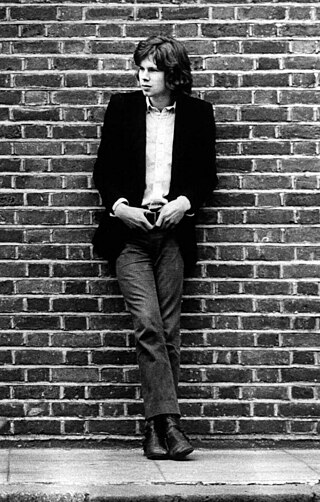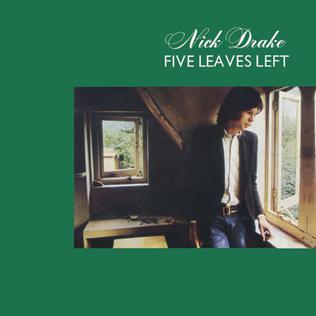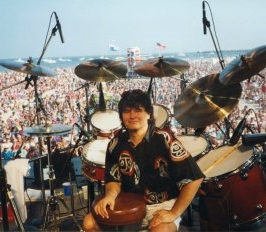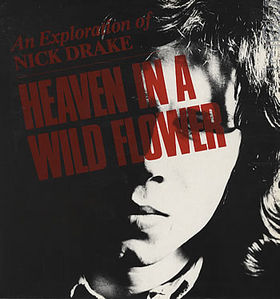
David James Mattacks is an English rock and folk drummer, best known for his work with British folk rock band Fairport Convention.

Nicholas Rodney Drake was an English singer-songwriter. An accomplished acoustic guitarist, Drake signed to Island Records at the age of twenty while still a student at the University of Cambridge. His debut album, Five Leaves Left, was released in 1969, and was followed by two more albums, Bryter Layter (1971) and Pink Moon (1972). While Drake did not reach a wide audience during his brief lifetime, his music found critical acclaim and he gradually received wider recognition following his death.

John Davies Cale is a Welsh musician, composer, and record producer who was a founding member of the American rock band the Velvet Underground. Over his six-decade career, Cale has worked in various styles across rock, drone, classical, avant-garde and electronic music.

Dave Pegg is an English multi-instrumentalist and record producer, primarily a bass guitarist. He is the longest-serving member of the British folk rock band Fairport Convention and has been bassist with a number of folk and rock groups including the Ian Campbell Folk Group and Jethro Tull.

Pink Moon is the third and final studio album by the English musician Nick Drake, released in the UK by Island Records on 25 February 1972. It was the only one of Drake's studio albums to be released in North America during his lifetime. Pink Moon differs from Drake's previous albums in that it was recorded without a backing band, featuring just Drake on vocals, acoustic guitar and a single piano melody overdubbed onto the title track.

Bryter Layter is the second studio album by English folk singer-songwriter Nick Drake. Recorded in 1970 and released on 5 March 1971 by Island Records, it was his last album to feature backing musicians, as his next and final studio album, Pink Moon, had Drake perform all songs solo.

Five Leaves Left is the debut studio album by English folk musician Nick Drake. Recorded between 1968 and 1969, it was released in 1969 by Island Records.

Robert Kirby was an English arranger of string sections for rock and folk music. He was best known for his work on the Nick Drake albums, Five Leaves Left and Bryter Layter, but also worked with Vashti Bunyan, Elton John, Ralph McTell, Strawbs, Paul Weller and Elvis Costello.

Mike Kowalski is an American drummer, percussionist and musicologist. He is best known as a longtime touring and session drummer for the rock band the Beach Boys.

The discography of Nick Drake, an English folk musician and singer-songwriter, consists of three studio albums, five singles, seven compilation albums, two box sets, one video album and various soundtrack and compilation appearances.

Way to Blue: An Introduction to Nick Drake is a 1994 compilation album featuring tracks by English singer/songwriter Nick Drake, taken from his original three albums plus Time of No Reply. The album reached gold certificate in the U.K. on 30 September 1999 after selling 100,000 copies. In United States in the year 2000 sales have jumped to 67,916 units.

"River Man" is the second listed song from Nick Drake's 1969 album Five Leaves Left. According to Drake's manager, Joe Boyd, Drake thought of the song as the centrepiece of the album. In 2004 the song was remastered and released as a 7" vinyl and as enhanced CD single including a video to the song by Tim Pope.

Fruit Tree is a box set by English singer/songwriter Nick Drake. It exists in several versions, all of which feature his three studio albums, plus additional material.

Akuma no Uta is the fifth album by Japanese experimental music band Boris. Originally released in 2003 on Diwphalanx Records with minimalist artwork, it was re-issued in 2005 on Southern Lord Records with a different cover and more music.

Heaven in a Wild Flower is a 1985 compilation album featuring tracks by English singer/songwriter Nick Drake, taken from Five Leaves Left, Bryter Layter and Pink Moon. The title of the compilation is taken from the lines of William Blake poem Auguries of Innocence. The album does not feature any of Drake's posthumously released material and because of the availability of more comprehensive compilations, such as Way to Blue and Fruit Tree, this collection is largely out of print.

"Magic" is the second listed song from Nick Drake's 2004 compilation album Made to Love Magic and was remastered and released as a single in 2004. The single was released on both CD and vinyl record formats, with Bryter Layter track "Northern Sky" as a B-side.

Second Grace: The Music of Nick Drake is a 2007 release of piano instrumentals by Christopher O'Riley, host of NPR's From The Top, of songs by English singer-songwriter Nick Drake (1948-1974). The booklet includes a lengthy and fairly technical discussion and appreciation of Nick's music by O'Riley.

Nick Drake is an American-only LP compilation release by English folk musician Nick Drake. It was released in August 1971 as SMAS-9307, shortly after Island Records had started selling their own records in the U.S. At the time, they were distributed by Capitol Records.

A Treasury is a Nick Drake compilation aimed at the audiophile audience. Released in the UK on 27 September 2004 and in the US on 26 October 2004, it was available as both a hybrid multichannel SACD and a 180 gram vinyl LP. To promote the compilation, a single was issued for the song "River Man", released on CD and 7" vinyl in the UK on 13 September 2004.



















